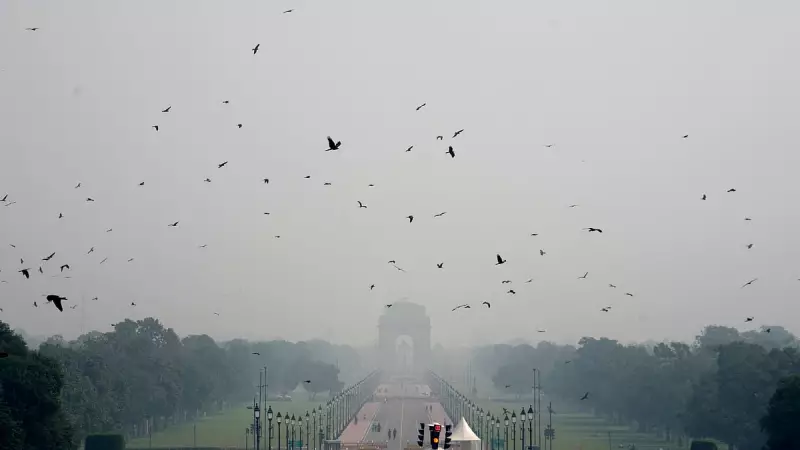
While millions across Delhi immersed themselves in the joyous celebrations of Diwali, the Festival of Lights, the capital's atmosphere told a different story—one of deteriorating air quality that quickly escalated into a severe pollution crisis.
The Alarming Numbers Behind the Festive Smoke
According to data from the Central Pollution Control Board (CPCB), Delhi's overall Air Quality Index (AQI) registered at 358 around 7 pm on Diwali evening. However, as the night progressed and fireworks intensified, the situation worsened dramatically. By 11 pm, the AQI had surged to 361, firmly placing the city in the 'very poor' category.
The monitoring station at Anand Vihar recorded particularly disturbing readings, with PM2.5 levels reaching 438 µg/m³ and PM10 concentrations hitting 533 µg/m³—both far exceeding safe limits.
Multiple Factors Converge in Perfect Pollution Storm
Several elements combined to create this environmental emergency:
- Fireworks Frenzy: Despite restrictions, widespread bursting of firecrackers contributed significantly to the pollution spike
- Agricultural Burning: Persistent stubble burning in neighboring states continued to pump pollutants into Delhi's air
- Unfavorable Weather: Calm winds and low temperatures prevented the dispersion of accumulated pollutants
- Local Emissions: Vehicle exhaust and industrial emissions added to the toxic mix
Graded Response Action Plan Kicks In
With air quality breaching the 'severe' threshold, authorities implemented Stage III of the Graded Response Action Plan (GRAP). This included:
- Banning construction and demolition activities across the entire NCR region
- Restricting the operation of BS-III petrol and BS-IV diesel vehicles
- Intensifying pollution control measures at identified hotspots
Health Concerns Amplify Amid Celebrations
Medical experts expressed serious concerns about the health implications of the polluted air. Doctors reported increased cases of respiratory distress, eye irritation, and aggravated asthma symptoms among vulnerable populations, including children, elderly citizens, and those with pre-existing health conditions.
"The combination of firework emissions and existing pollutants creates a toxic cocktail that can have both immediate and long-term health consequences," warned a pulmonologist from a leading Delhi hospital.
As Delhi wakes up to the morning after Diwali, the city faces the familiar challenge of balancing traditional celebrations with environmental responsibility—a dilemma that grows more pressing with each passing year.





